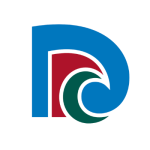No Tutukaka Harbour 'greeblies' great news
.jpg)
A thorough investigation of Tutukaka Harbour has turned up nothing unusual or invasive lurking under the water - a fact Northland Regional Council Biosecurity staff are thrilled about.
Regional Council Biosecurity Senior Programme Manager Don McKenzie says the current lack of marine pests like sea squirt is tremendous and provides a great baseline for future monitoring in the marina.
“We weren’t sure what we’d find given the sheer volume of boat traffic that uses the harbour but after last month’s survey we’re confident there’s nothing nasty there at the moment,” he says.
Regional Council staff worked with experts from both the National Institute of Water and Atmospheric Research (NIWA) and Department of Conservation (DOC) on the underwater survey.
“The survey was an opportunity for a collaborative approach to marine biosecurity surveillance, something MAF Biosecurity New Zealand (MAFBNZ) has been working towards through the ‘Top of the North Forum’,” Mr McKenzie says.
The forum brings together key stakeholders from around the region, including the Northland Regional Council, the marina industry, aquaculture industry, iwi representatives and other interested parties.
In addition the NRC is working towards a marine biosecurity plan which will see increased levels of surveillance and the development of a regional response to deal with suspect marine invaders.
The Tutukaka operation was the first of what Mr McKenzie hopes will be more widespread and regular surveys as a result of the greater levels of collaboration between key stakeholders.
Northland Regional Council, NIWA and DOC staff set a variety of crab and starfish pots during the three-day operation. Sediment from the harbour floor was also sampled and shore-based and underwater surveys of the piles, pontoons, moorings and beaches were carried out.
“Most interesting was the absence of Styela clava – sea squirt – an invasive species which had previously been found in the marina in very small numbers by MAFBNZ and removed,” says Mr McKenzie.
“From a management perspective this demonstrates the importance of regular surveillance. Early detection of potentially invasive and harmful marine animals and plants is critical to maximise the chance of removing or controlling them. In this case, the early detection and removal of Styela clava was successful.”
Mr McKenzie says the key message for anyone using the marine environment is to check and clean hulls regularly, particularly when moving between areas.
“Invasive pests can establish and spread rapidly so it’s important to be alert for sea life that looks different and report it immediately to the Regional Council or MAFBNZ,” he says.
Information on marine pests can be found on the MAF Biosecurity website via www.biosecurity.govt.nz
